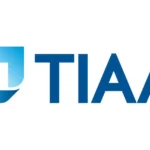Introduction
“Launching a food business involves combining culinary passion with strategic planning to create a successful and compliant venture.”
Starting a food business involves creating a plan to sell food products or services. It requires understanding the market, securing necessary licenses, and developing a menu or product line. You’ll need to establish a location, either physical or online, and ensure you meet health and safety regulations. This venture combines passion for food with strategic business planning.
Ready to turn your culinary dreams into reality? Start by researching your market and creating a solid business plan. Don’t wait—take the first step towards launching your food business today!
A successful food business requires careful planning and adherence to local regulations. You’ll need to focus on quality, customer service, and effective marketing strategies. This article will guide you through the essential steps to get your food business off the ground, from idea development to daily operations.
Types of Food Businesses

The food industry offers a wide array of business models, each with its unique set of opportunities and challenges. Understanding these options will help you determine which type aligns best with your goals and resources.
- Restaurants: Traditional dine-in establishments that can range from fast food to fine dining.
- Food Trucks: Mobile kitchens that offer flexibility and lower overhead costs.
- Catering Services: Providing food for events and gatherings, often requiring specialized menus and logistics.
- Packaged Goods: Producing and selling packaged foods through retail or online channels.
- Ghost Kitchens: Delivery-only kitchens that operate without a physical storefront.
Each type of food business requires different operational setups and marketing strategies, so it’s essential to choose one that aligns with your vision and capabilities.
Market Research and Analysis
Effective market research is foundational to the success of your food business. It involves understanding consumer preferences, identifying trends, and analyzing your competition.
- Identifying Target Demographics: Determine who your potential customers are, their eating habits, and their preferences.
- Analyzing Competitors: Study existing food businesses in your area to understand their strengths, weaknesses, and market positioning.
- Understanding Market Trends: Stay informed about current food trends, such as health-conscious eating or sustainability, to align your business with consumer demands.
By conducting thorough market research, you can make informed decisions that enhance your business strategy and increase your chances of success.
Crafting a Solid Business Plan
A well-developed business plan serves as a roadmap for your food business, outlining your objectives, strategies, and financial projections.
- Executive Summary: Provide a concise overview of your business concept, including your mission and goals.
- Business Description: Detail your food business, including the type of cuisine, target market, and competitive advantages.
- Market Analysis: Include insights from your market research, highlighting opportunities and challenges.
- Financial Projections: Outline your expected revenue, expenses, and profitability to guide your financial planning.
A solid business plan not only helps you secure funding but also provides a clear vision for your business’s future.
How Might A Business Use A Blog
Defining Your Business Model
Choosing the right business model is essential for success:
- Franchise: Operating under an established brand with proven systems and support.
- Independent Business: Creating a unique concept from scratch with full control over operations.
- Joint Venture: Partnering with another business to share resources and risks.
Each model has its benefits and challenges, so select one that aligns with your goals and resources.
Understanding Food Business Regulations

Compliance with regulations is vital for operating legally and safely:
- Health and Safety: Adhere to food safety standards and sanitation practices.
- Local and State Laws: Understand zoning laws, labor laws, and other local requirements.
- Federal Regulations: Follow FDA guidelines and other federal rules relevant to your business.
Familiarize yourself with these regulations to avoid legal issues and ensure a smooth operation.
Obtaining Necessary Permits and Licenses
Securing the right permits and licenses is crucial:
- Food Handler’s Permit: Required for individuals handling food.
- Business License: Grants legal permission to operate your business.
- Food Establishment Permit: Specific to businesses involved in food preparation and service.
Check with your local health department and business licensing office for specific requirements.
Funding Your Food Business
Securing funding is often one of the most challenging aspects of starting a food business:
- Loans: Consider traditional bank loans or SBA loans.
- Investors: Seek venture capital or angel investors who are interested in the food industry.
- Grants: Explore grants available for small businesses or food entrepreneurs.
Develop a comprehensive financial plan to present to potential funders.
Managing Startup Costs
Startup costs can be substantial, so effective management is crucial:
- Initial Expenses: Include equipment, inventory, and lease deposits.
- Ongoing Costs: Consider rent, utilities, staff salaries, and marketing.
- Cost Control: Implement strategies to manage expenses and maximize efficiency.
Careful budgeting and financial planning will help keep your business on track.
Choosing a Business Location

Location can significantly impact your food business’s success:
- Visibility and Accessibility: Choose a location that attracts foot traffic and is easy to find.
- Competition: Analyze nearby businesses to determine if the area is saturated or if there are gaps you can fill.
- Cost: Balance location benefits with affordability.
A strategic location can enhance your business’s visibility and profitability.
Designing Your Food Business Layout
The layout of your business affects both efficiency and customer experience:
- Kitchen Design: Ensure the kitchen is functional and meets health codes.
- Customer Area: Create a welcoming space with appropriate seating and décor.
- Flow and Efficiency: Optimize the layout for smooth operations and customer service.
A well-designed layout can improve operational efficiency and customer satisfaction.
Sourcing Ingredients and Suppliers
Finding reliable suppliers is essential for maintaining product quality:
- Selecting Suppliers: Choose suppliers who offer quality ingredients at reasonable prices.
- Building Relationships: Develop strong relationships with your suppliers for better service and terms.
- Managing Inventory: Implement inventory management practices to avoid shortages and overstock.
Reliable sourcing ensures that your food business runs smoothly and consistently.
Hiring and Training Staff
Your staff plays a critical role in your business’s success:
- Recruitment: Hire skilled and motivated employees who align with your business’s values.
- Training: Provide comprehensive training on food safety, customer service, and operational procedures.
- Retention: Foster a positive work environment to retain talented staff.
Effective hiring and training contribute to high-quality service and a positive work atmosphere.
Developing Your Menu
A well-thought-out menu is key to attracting and retaining customers:
- Menu Design: Create a menu that highlights your unique offerings and appeals to your target audience.
- Pricing: Set prices that reflect the cost of ingredients, labor, and desired profit margins.
- Testing and Feedback: Conduct taste tests and gather customer feedback to refine your menu.
A compelling menu can differentiate your business and drive customer loyalty.
Marketing and Branding Strategies
Effective marketing and branding can set your food business apart:
- Brand Identity: Develop a strong brand identity, including logo, colors, and messaging.
- Online Presence: Utilize social media, a website, and online reviews to build your brand and attract customers.
- Promotional Activities: Plan marketing campaigns, special events, and promotions to generate buzz.
A well-executed marketing strategy can enhance visibility and drive customer engagement.
Setting Up Operations and Logistics
Efficient operations and logistics are crucial for smooth business functioning:
- Operational Procedures: Establish procedures for food preparation, service, and inventory management.
- Logistics: Plan for delivery schedules, supply chain management, and equipment maintenance.
- Quality Control: Implement quality control measures to ensure consistency and safety.
Effective operations and logistics contribute to operational efficiency and customer satisfaction.
Implementing Technology and POS Systems
Technology and POS systems streamline business operations:
- POS Systems: Invest in a reliable POS system for transactions, inventory management, and sales tracking.
- Technology Integration: Use technology for online ordering, reservations, and customer relationship management.
- Data Security: Ensure that your technology systems are secure to protect customer and business data.
Technology can enhance efficiency and provide valuable insights into your business operations.
Scaling and Growing Your Food Business

Scaling your food business involves strategic planning and execution:
- Expansion Strategies: Consider opening additional locations, franchising, or diversifying your offerings.
- Operational Efficiency: Streamline operations to handle increased demand without compromising quality.
- Market Trends: Stay informed about industry trends and adapt your business strategies accordingly.
Effective scaling strategies can help you grow your business and increase profitability.
Importance of Starting a Food Business
Starting a food business can offer numerous benefits:
- Passion and Creativity: Allows you to pursue your passion for food and showcase your creativity.
- Economic Opportunity: Provides the potential for financial success and economic growth.
- Community Impact: Contributes to the local economy and offers employment opportunities.
Understanding these benefits can motivate and guide you through the startup process.
Additional Tips
- Stay Informed: Keep up with industry trends and consumer preferences.
- Network: Connect with other food entrepreneurs and industry professionals for support and advice.
- Adapt and Innovate: Be open to adapting your business model and innovating to stay competitive.
These tips can help you navigate challenges and capitalize on opportunities in the food industry.
Pro and Cons
Here’s a table outlining the pros and cons of starting a food business:
| Pros | Cons |
| Potential for Profit: High demand for food and beverage services can lead to significant financial returns. | High Competition: The food industry is saturated, requiring differentiation to stand out. |
| Creative Freedom: Opportunity to develop unique dishes, concepts, and brand identity. | Operational Challenges: Managing inventory, staffing, and compliance can be complex and time-consuming. |
| Growing Industry: Continuous growth in consumer dining preferences and trends creates new opportunities. | High Startup Costs: Initial investment can be substantial, including equipment, licenses, and marketing expenses. |
| Community Impact: Contributes to the local economy and provides employment opportunities. | Regulatory Compliance: Adherence to health and safety regulations requires ongoing effort and resources. |
| Flexible Business Models: Various options like food trucks, catering, and restaurants offer different entry points. | Work-Life Balance: Running a food business often involves long hours and can impact personal life. |
| Customer Interaction: Direct engagement with customers allows for immediate feedback and relationship building. | Supply Chain Issues: Managing suppliers and ingredient availability can be challenging and affect operations. |
Answers to Key Questions
What is the first step in starting a food business?
The first step is to conduct thorough market research to understand the demand, target audience, and competitive landscape. This research will help you refine your business idea and develop a comprehensive business plan tailored to your findings.
How much money do I need to start a food business?
The amount needed varies depending on the type of food business, location, and scale. Startup costs typically include expenses for equipment, ingredients, licenses, and marketing. For small food trucks or catering services, costs might range from $20,000 to $100,000, while larger restaurants could require upwards of $250,000. It’s essential to create a detailed budget and financial plan to determine your specific needs.
What licenses and permits are required for a food business?
Commonly required licenses and permits include a food handler’s permit, business license, and food establishment permit. Additionally, you may need health department inspections, zoning permits, and potentially a liquor license if you plan to serve alcohol. Requirements vary by location, so check with your local health department and business licensing office.
How can I effectively market my new food business?
Effective marketing strategies include creating a strong brand identity, building an online presence through social media and a business website, and engaging in local community events. Utilize promotional activities such as special offers and collaborations with local influencers. Consistent branding and customer engagement are key to building a loyal customer base.
What are some common challenges when starting a food business?
Common challenges include managing high startup costs, navigating complex regulations, and competing with established businesses. Additionally, maintaining consistent quality, handling supply chain issues, and effectively managing staff can be challenging. Address these challenges by thorough planning, continuous learning, and adapting to market demands.
This comprehensive guide should provide a solid foundation for starting your food business, covering all crucial aspects from planning and regulations to marketing and scaling.
Conclusion
Starting a food business is a rewarding venture with the potential for significant growth and success. By thoroughly researching the market, crafting a solid business plan, and adhering to regulations, you can lay a strong foundation for your business.
Effective management of costs, staff, and operations, combined with strategic marketing and scaling efforts, will help ensure long-term success. With careful planning and execution, you can turn your culinary passion into a thriving business.

Hi! I’m Semuel Adams. I’m a business expert and author at SkyVoxes. With a Master’s degree in Business, I’m passionate about sharing practical advice and strategies to help businesses thrive. My goal is to make complex business concepts easy to understand and apply. If you have any tips or information about business you can share with me, I w’ll add this important information in my content.










